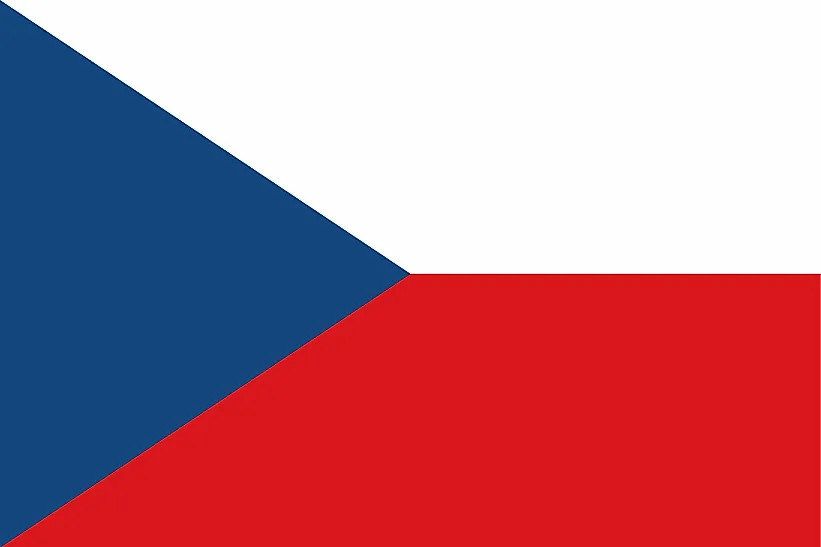
Czech Republic
| Continent | Europe |
| Capital | Prague |
| Population | 10,644,842 |
| GDP | $351.00 Billion |
| GDP per Capita | $33,200 |
| Dialing Code | +420 |
| ISO Code (2-letter) | CZ |
| ISO Code (3-letter) | CZE |
Czech Republic Landscapes






About Czech Republic
Welcome to the Czech Republic (Czechia), a nation where medieval charm meets modern innovation in the heart of Europe. With approximately 10.7 million people occupying 78,866 square kilometers, the Czech Republic combines rich historical heritage with contemporary development, creating a unique blend of tradition and progress.
Geographic Features and Natural Beauty
The Czech Republic’s geography features diverse landscapes, from the Bohemian Forest along the German border to the Moravian vineyards in the east. The country is surrounded by mountains, including the Krkonoše range, home to the country’s highest peak, Sněžka (1,603 meters).
The Bohemian-Moravian Highlands create a natural divide between the historical regions of Bohemia and Moravia. The country’s rivers, particularly the Vltava and Elbe, have played crucial roles in its development. The Czech Karst region features extensive cave systems and unique geological formations.
Protected areas like the Šumava National Park preserve pristine forests and rare species, while the country’s numerous mineral springs have supported famous spa towns like Karlovy Vary and Mariánské Lázně.
Cultural Heritage and Traditions
Czech culture reflects a rich history of artistic and intellectual achievement. Prague’s architectural heritage spans Gothic, Renaissance, Baroque, and Art Nouveau styles, creating one of Europe’s most beautiful capitals. The country’s UNESCO World Heritage sites include historic town centers, castles, and cultural landscapes.
Traditional arts include renowned glassmaking, particularly Bohemian crystal, puppet theater, and folk crafts. Czech cuisine features hearty dishes like svíčková, knedlíky, and world-famous beer brewing traditions dating back centuries.
Music plays a central role in Czech culture, from folk traditions to classical composers like Dvořák and Smetana. Literature and theater, particularly during the Czech National Revival, helped preserve and develop Czech language and identity.
Historical Journey
The Czech Republic’s history spans from ancient Celtic and Germanic settlements through the medieval Kingdom of Bohemia to the modern era. The country has been a center of European culture and politics, experiencing significant moments like the Hussite movement and the Prague Spring.
After the Velvet Revolution of 1989 and the peaceful dissolution of Czechoslovakia in 1993, the Czech Republic emerged as a successful democratic state and member of the European Union, while maintaining its distinctive cultural identity.
Modern Economic Landscape
Today’s Czech Republic has a developed, export-oriented economy focusing on manufacturing, particularly automotive and machinery production. The country has become an important center for technology and innovation, with a strong tradition of engineering excellence.
Prague has emerged as a major European business hub, while traditional industries like brewing and glassmaking continue to thrive. The country’s strategic location and skilled workforce have attracted significant foreign investment.
International Relations and Global Position
The Czech Republic maintains active participation in the European Union, NATO, and various international organizations. The country’s central location and historical experience make it an important voice in European affairs.
Did You Know?
• The Czech Republic has the highest beer consumption per capita in the world?
• Prague Castle is the largest ancient castle complex in the world?
• The word “robot” was first introduced by Czech writer Karel Čapek?
• The country has one of the densest networks of marked hiking trails in the world?
Conclusion
The Czech Republic represents a remarkable combination of historical richness and modern development in Central Europe. From its medieval castles to its modern industries, from its brewing traditions to its technological innovations, the country continues to evolve while preserving its cultural heritage. As it addresses contemporary challenges including economic transformation and sustainable development, the Czech Republic remains committed to its role as a bridge between Eastern and Western Europe while maintaining its unique identity.